"Next week, we can already bring the first early Sicilian prickly pears to the markets. That's over a month earlier than usual. This small revolution in the prickly pear sector is the result of careful observation, years of experience, and targeted cultivation interventions. Some time ago, as an experiment, we planted prickly pear plants on 1 hectare in greenhouses made of recyclable plastic, which we can also open if it gets too hot. The goal is to advance the flowering phase, fruit setting, and ripening of the fruit as much as possible," said Cono Seggio, owner of the Sicilian company Seggio Fruit.
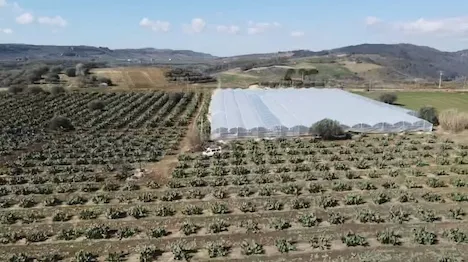
Seggio Fruit sells large quantities of summer fruits grown on an area of about 300 hectares in a land where prickly pears, grapes, and apricots flourish. The main product is the prickly pear grown in San Cono and the neighboring municipalities of Mazzarino, Piazza Armerina, and San Michele di Ganzaria. The company deposits about 2,500 tons of prickly pears, which are categorized into the fruit of the first flowering (Agostani) and second flowering (Bastardoni). The fruit is processed in a large packing station of 3,000 square meters. Within 24 hours of harvest, the prickly pears are stripped of their thorns, sorted, and ready for the market.
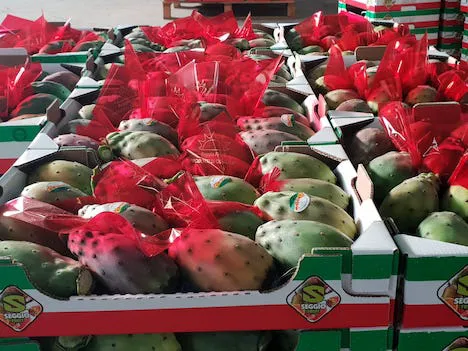
"We expect nice quantities of the early product, but for the late harvest, we cannot yet make any statements, given the current high temperatures and some unknown factors related to climate change. On 20 June, we completed the thinning, what we call 'scozzolatura,' on all traditional plots. This is done entirely manually and involves removing the first fruits to encourage a second flowering. In this way, we obtain fruit of a larger caliber, which is also juicier and more flavorful. Those cactus figs from the second flowering are called Bastardoni," explained Cono Seggio.
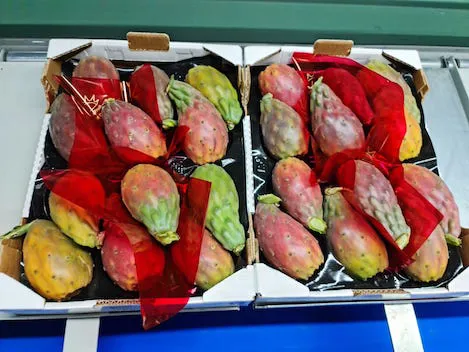
Prickly pears are subdivided according to the ripening period, with Agostani or Latini, for fruit of the first flowering and Scozzolati or Bastardoni for fruits of the second flowering, and also according to the color.
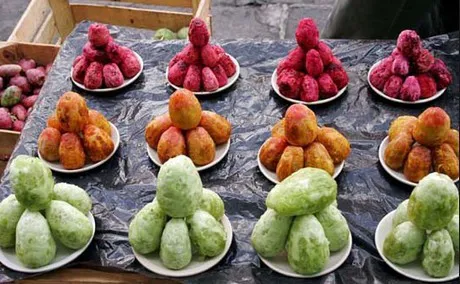
There are three varieties:
- the Yellow prickly pear or Sulfarina. The fruit has a yellow-orange color, is very sweet, and has soft and juicy flesh;
- the Red prickly pear or Sanguigna. Once ripe, this prickly pear is deep red. The taste is sweet, and the flesh is crumbly. This variety contains fewer kernels than the other varieties;
- the White prickly pear or Muscaredda. This variety has a white-like color, which sometimes makes people think that the prickly pear is not ripe yet. Nevertheless, this cactus pear is very popular among connoisseurs for its crispy texture and excellent taste properties.
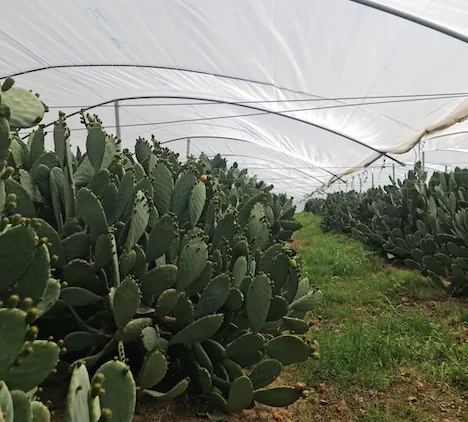
"We are committed to using innovative techniques to perfect the early ripening of the fruit in order to be able to offer nice volumes of tasty fruits, with a high Brix value and good size at a time when the markets are still empty. Since growing costs are higher in the greenhouse, we naturally expect better selling prices to keep the activity profitable. For several years now, there has been good demand, as eating habits seem to have changed. Consumers are increasingly looking for healthy food with functional properties."
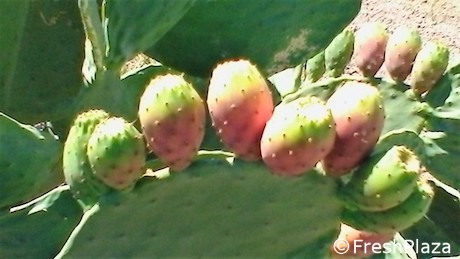
"We actually grow prickly pears in greenhouses for several reasons. We hedge against climatic setbacks and benefit from a favorable marketing window. The yield is higher, and also the quality can be better controlled. But the cultivation costs are higher, especially in the current context with a lack of raw materials and prices that are skyrocketing. It is now almost impossible to build another greenhouse, given the doubling of the price of plastic film. We are, of course, talking about recycled plastic with a view to environmental sustainability and lower consumption of new raw materials."
For more information: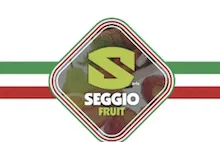
Seggio Cono
Seggio Fruit Srl
C/da Albanese snc
95040 San Cono (CT)
+39 0933 970532
+39 327 348 6303
seggiofruitsrls17@gmail.com
